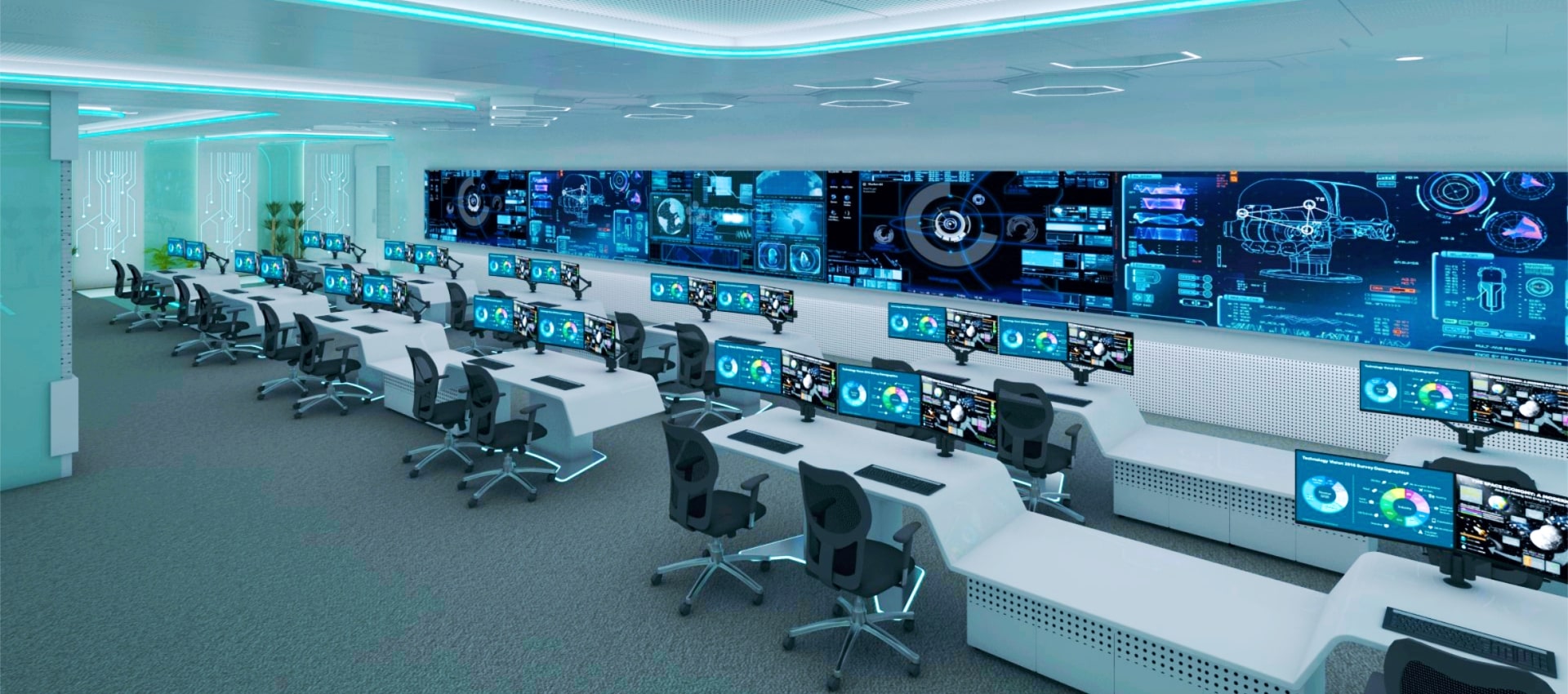
Concept to Reality: Control Room Layouts for Oil & Gas Industry
In high-pressure sectors like oil and gas, where precision, safety, and seamless operations are non-negotiable, the control room serves as the heart of all activity. More than just a room, it functions as a critical environment that enables round-the-clock monitoring, real-time decision-making, and swift coordination. Turning a concept into a fully operational Oil & Gas Control Room requires a deep understanding of industry demands, detailed design planning, and the right blend of ergonomics, smart technology, and long-term functionality.
Understanding the Requirements of Oil & Gas Control Rooms
Every Oil & Gas Control Room function as the nerve center for upstream, midstream, and downstream operations. These rooms are responsible for monitoring pipelines, pressure levels, drilling operations, refinery status, and safety protocols. Given the complexity of these operations, a well-designed Control Room directly impacts operational uptime and worker safety.
The layout must factor in critical aspects like line of sight, cable management, acoustics, lighting, HVAC integration, and secure access—all while aligning with industry standards such as ISO 11064. The right Control Room Solution translates to minimal fatigue, quick decision-making, and error-free operation.
Key Elements in Control Room Design
- Operator-Centric Layouts
The first step in creating an effective Control Room is to put the operator first. Adjustable workstations, console angles, monitor placement, and video wall visibility are all set up to promote user comfort and quick reaction times. Visual field analysis, anthropometric information, and ergonomic evaluations are all very important in this situation.
- Modular Console Systems
Durability meets flexibility in modular console systems designed for Oil & Gas environments. These systems must withstand harsh conditions and continuous operation while offering maintenance ease. Using modular office furniture and adaptable office workstations allows for scalability and quick reconfiguration when operations expand or evolve.
- HVAC and Acoustic Integration
Heat generated by hardware and prolonged operator shifts call for thoughtful HVAC integration. In parallel, controlling ambient noise levels is essential to prevent fatigue and distraction. This combination ensures a functional environment that supports uninterrupted performance.
- Data Cable Management
In Oil & Gas Control Rooms, the speed and accuracy of data transmission directly impact operations. Cable management isn’t just a matter of neatness—it affects performance. Using hidden, accessible pathways helps reduce signal interference and makes it easier to carry out maintenance without disrupting workflow.
- Lighting and Visual Clarity
Lighting in a Control Room has a big influence on operator focus and comfort. It’s not just about brightness levels—it’s about getting the right balance. Thoughtfully placed task lighting, reduced glare, and emergency lighting all play a part in helping teams stay sharp, especially during extended hours or critical situations.
From 3D Concepts to Operational Control Rooms
The process of turning 2D drawings into a fully functional Control Room requires close coordination among architects, product designers, electrical engineers, and project managers. Before moving into execution, teams use design mockups and ergonomic trials to evaluate how the space will actually function. In fast-paced environments like Oil & Gas, these simulations are key to spotting potential issues in layout or system planning early on—saving time and avoiding costly errors later.
High-priority industries such as Oil and Gas, Steel, Power Plants, Aviation, Cement, Marine, Smart City, and Surveillance require precise attention to detail at each stage—from layout planning to the final commissioning of the Control Room Solution.
Why Control Room Layouts Impact Safety and Productivity
Design flaws in an Oil & Gas Control Room can lead to serious consequences. Issues like inadequate lighting, poorly planned furniture placement, or subpar console materials may cause operator fatigue, slower response times, and even affect critical safety measures. A well-organized layout, combined with ergonomic office workstations and durable, high-quality materials, helps operators stay focused, responsive, and in control at all times.
Pyrotech Workspace Solutions: Delivering Reality from Concept
Since 2006, Pyrotech Workspace Solutions has built a strong reputation for delivering reliable and well-designed Control Room environments. With more than 60,000 consoles and over 450 Control Rooms implemented across industries such as Oil & Gas, power, aviation, marine, and smart surveillance, the company has become a dependable partner for critical operations, where performance and precision matter most.
In the Oil & Gas Control Room space, solutions are designed to handle the demands of round-the-clock operations. From ergonomic consoles and operator-centric layouts to complete design-to-build execution, each project is developed to meet the specific needs of the industry. The in-house team of architects, engineers, and designers focuses on building layouts that are practical, durable, and easy to maintain.
For tailored Control Room Solutions, visit Pyrotech Workspace Solutions Pvt Ltd.
FAQs
What makes a Control Room suitable for the Oil & Gas industry?
A well-designed Oil & Gas Control Room needs to handle tough environments, support real-time monitoring, offer ergonomic comfort, and use durable materials that can withstand constant use.
How does modular office furniture help in Control Rooms?
Modular office furniture makes it easier to adapt the workspace. It allows quick reconfiguration, supports scalability, and provides better access for maintenance—ideal for operations that change over time.
What standards are followed in Control Room design?
ISO 11064 and ergonomic guidelines are commonly followed to ensure safety, comfort, and performance.
Are custom Control Room Solutions available for specific industries?
Yes, layouts and furniture are tailored for industries like Oil & Gas, power, marine, and surveillance.
How long does a Control Room project take?
Depending on scope, timelines range from a few weeks to several months.





No Comments